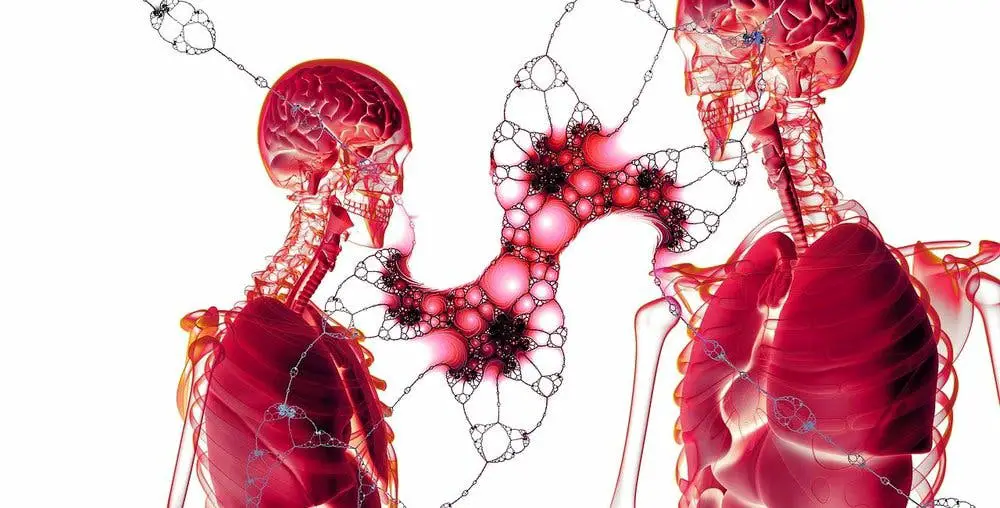Transaminases are called a group of enzymes produced in different areas of the body, where the liver stands out. Inquiring about high transaminase causes allows us to identify the risk factors that can produce this imbalance in transaminases.
It is worth mentioning that this imbalance in the regulation of transaminases can be a serious condition, since they are a sign that an inflammatory process is taking place in the liver .
It happens that when there is inflammation in the liver, there is also the destruction of the liver cells responsible for releasing transaminases into the blood . High transaminases are usually detected by a simple biochemical test.
A priori , it can be mentioned about high transaminases causes that the cause can be found in infectious, ischemic or autoimmune diseases , viruses, excess fat accumulated in the liver and the side effects of the use of certain medications.
High transaminases causes and health
Behind the causes of abnormal levels of transaminases are their important functions in the body. These enzymes have the task of contributing to the production of multiple amino acids . Analyzing transaminases from a clinical perspective, an examination showing that they are high is considered of utmost importance.

This is because in most cases this is a sign that inflammation is taking place in the liver. However, this is not the case in all cases, as it is also possible that abnormally high levels of these enzymes are caused by rheumatic diseases or heart failure . Regardless of the cause, it is always considered a medically relevant fact.
To talk about this condition, the acronyms AST or ALT are used. A curious fact is that, although it is usually a sign that the liver is inflamed, patients do not tend to present symptoms .
It is for this reason that a patient is not usually found to have elevated transaminases until a routine laboratory test is performed. Similarly, some liver diseases can occur without altering transaminase levels.
Meaning
If you delve into the meaning of this result in medical tests, it becomes clear that in most cases it is an indication that the patient may be having liver problems .
Diagnosis is made by examining the values of all types of transaminases, since there is no single form of this enzyme. Specifically, it differentiates between AST (Aspartate Transaminase) and ALT (Alanine Transaminases) . Each of these enzymes acts as an indicator of possible liver damage.
The importance of this lies in the fact that the liver functions as a “laboratory” in the body. It is responsible not only for the breakdown of amino acids, but also for their synthesis . Thanks to the liver, energy storage is possible. However, when it fails, the membrane of the hepatocytes, the liver cells, increases its permeability.

Consequently, liver cells allow transaminases to be able to leak into the serum, which is the non-cellular part of the blood . This is also the reason why abnormal transaminase levels are considered a sign of liver problems.
Symptoms of high transaminases
Although high transaminases are not always accompanied by symptoms , in some cases it is possible that some may occur as a result of liver damage. In addition, the following symptoms may also be a sign that a laboratory test is needed to evaluate transaminase levels:
- pain in the abdomen
- Fatigue
- vomiting or nausea
- Jaundice
- unjustified itching
- coluria
It is always necessary that the symptoms and high values of transaminases be evaluated in the medical context of the patient, so that the doctor is able to determine the causes of the pathology in order to subsequently take the appropriate measures.
How are transaminase levels assessed?
The values obtained from the transaminase levels are interpreted in the following ways:
Values less than normal
In this case, they are not considered to be related to an underlying pathology.
Values that exceed up to ten times the normal value
Very high values are interpreted as a possible indication of acute hepatitis caused by a virus. Generally, these values remain high until the cause is resolved, which usually lasts a few months.
Values that exceed up to one hundred times the normal value
Extremely high values are related to hepatic ischemia or intoxication due to the consumption of certain drugs . However, the exception occurs with chronic hepatitis, since in this case the levels of transaminases are not usually so extreme.
High transaminases: causes
There are a lot of factors that should be mentioned when talking about high transaminases and their causes . These abnormal values of these enzymes are not always indicative of a serious associated pathology, since on some occasions they can be caused by something as simple as a flu process.
It is for this reason that it is very important that only one doctor takes care of the evaluation of the values and any other symptoms that occur together. Now, among the main reasons why transaminases can be elevated are the following :
- Hepatitis C and B, two viral diseases that often become chronic .
- Hepatic steatosis or fatty liver. It occurs when too many triglycerides build up inside the liver.
- Infectious monocleosis. It is a disease caused by the Epstein-Barr virus, which is from the herpes-viridae virus family.
- Chronic drug-induced hepatitis. A type of chronic hepatitis derived from the use of certain drugs.
- Hemochromatosis, pathology associated with the accumulation of excess iron in the body.
- Alcoholism.
It is also possible that the causes of high transaminases are due to factors other than liver damage such as Wilson’s disease, gallstones, pancreatic disease, systemic disease, cytomegalovirus, hemolytic anemia, and myocardial infarction.
Treatment of high transaminases
Normally, high transaminases are caused by an external factor related to lifestyle, such as alcoholism, or a triggering disease, such as hepatitis. According to high transaminases and causes, different treatments are evaluated. For example, if the cause is found in a disease, treatment is focused entirely on the disease .
On the contrary, when lifestyle is the trigger for high transaminases, the doctor must prescribe the adoption of changes in lifestyle that allow the normalization of transaminase levels . In this sense, some treatments are the following:
- Avoid excessive consumption of salt and sugar.
- Maintain a balanced diet .
- Increase the intake of boiled, baked, steamed and grilled foods, reducing fried foods.
- Increase the consumption of fruits and vegetables.
- Avoid drinking alcoholic beverages.
- Improve daily hydration.
- Practice physical activity regularly.
- Replace medications with ones that do not cause side effects in the event that high transaminases are caused by the side effect of a drug.
References
- Paul, CE, Rodríguez-Mata, M., Busto, E., Lavandera, I., Gotor-Fernández, V., Gotor, V., … & Collado, I. (2014). Transaminases applied to the synthesis of high added-value enantiopure amines. Organic Process Research & Development , 18 (6), 788-792.
